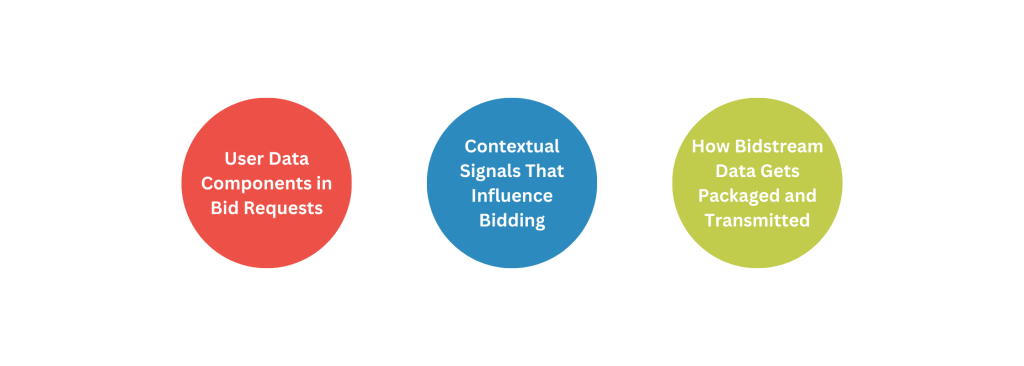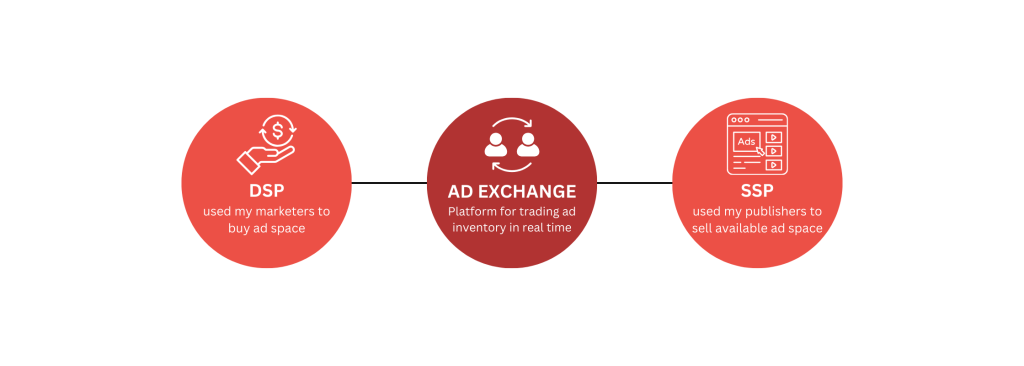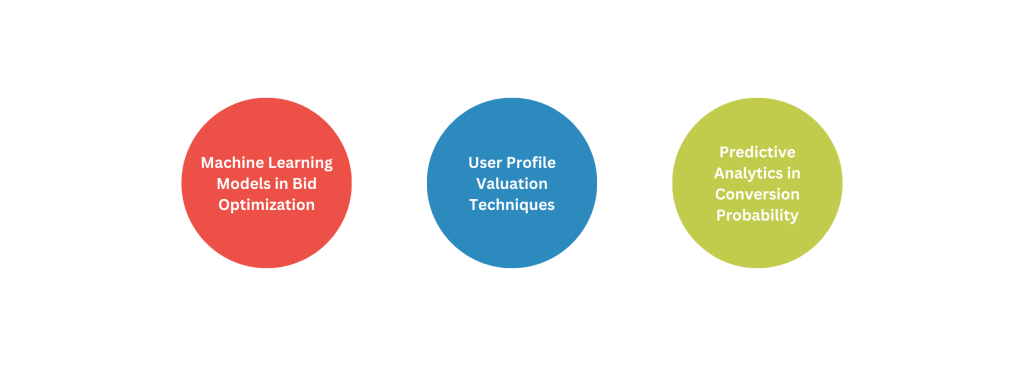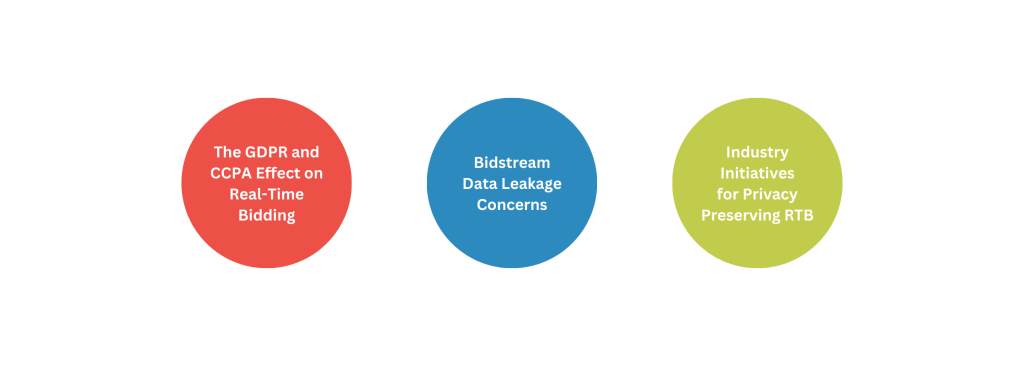How Real-Time Bidding Actually Works
Real-time bidding is changing digital advertising. Market projections show its value will hit $50 billion by 2028. The system handles hundreds of billions of bid requests each day and completes auctions in under 100 milliseconds while pages load. This quick system has altered traditional advertising and offers ad impressions that cost 20 times less than standard methods.
Real-time bidding lets advertisers buy and fine-tune ad placements right away across many networks. The system sends data to thousands of companies that helps target ads better and boost ROI through automated auctions. The improved efficiency brings its own set of challenges, mainly around data privacy, and has caught the attention of watchdogs like the Federal Trade Commission.
This detailed guide breaks down how programmatic advertising works. It covers everything from the tech that powers split-second choices to vital privacy issues that will shape what comes next. You’ll find how AI and machine learning make targeting more precise and help convert more customers in this ever-changing digital world.
The Anatomy of Real-Time Bidding in Programmatic Advertising
The global real-time bidding (RTB) market reached USD 38.40 billion in 2025. Experts project it to hit USD 242.20 billion by 2030, with an impressive 30.1% CAGR. This automated auction system works just like financial markets, but trades impressions instead of stocks.
What Makes Real-Time Bidding Different from Traditional Ad Buying
Traditional advertising makes marketers buy bulk impressions at fixed prices whatever their value. RTB changes this by letting advertisers bid on each impression individually. Advertisers can now pick specific impressions from multiple publishers instead of getting stuck with package deals from one publisher.
Traditional media buying involves direct negotiations with publishers, proposal requests, quote collection, and insertion order creation. RTB streamlines processes by automating most of this work. The system uses advanced targeting based on user data – from demographics and location to interests and browsing behavior.
RTB shines in cost-efficiency too. Programmatic ads cost nowhere near what traditional ads do – up to 20 times less per impression. They deliver individual-specific experiences to exact target audiences. The system also provides immediate performance metrics, so campaigns improve on the spot rather than waiting for final reports.
The 100-Millisecond Auction: A Timeline Breakdown

RTB moves at lightning speed – taking just 30-100 milliseconds. That’s faster than one-third of a blink. Here’s what happens when someone visits a website:
- The webpage loads with an ad slot, which creates a bid request with user, webpage, and ad space details.
- The publisher’s Supply-Side Platform (SSP) sends this request to an ad exchange.
- The ad exchange alerts multiple Demand-Side Platforms (DSPs) representing advertisers.
- DSPs assess the request using targeting parameters, set bid values, and submit bids with ad markup.
- The highest bidder wins but pays just above the second-highest bid.
- The winning ad shows up on the user’s webpage.
This process moves valuable data through the system, including device IDs, IP addresses, locations, and browsing history. This “bidstream data” helps target ads precisely but raises privacy concerns.
Key Players in the Real-Time Bidding Ecosystem
Several connected participants aid millions of daily auctions in the RTB world.
Demand-Side Platforms (DSPs) help advertisers automate media buying from multiple sources. They assess impression opportunities and set optimal bid prices based on advertiser goals. Google’s Display & Video 360, Amazon DSP, and Xandr Invest lead the DSP market.
Supply-Side Platforms (SSPs) help publishers sell ad inventory. They connect to various ad exchanges, DSPs, and networks at once to maximize publisher revenue. Google Ad Manager, OpenX, and Magnite stand out among SSPs.
Ad Exchanges work as digital marketplaces that connect buyers with sellers. They make real-time auction-based ad inventory purchases possible. Google AdX, Xandr, and Index Exchange dominate this space.
The RTB Project, a 13-year-old initiative now called OpenRTB, created standard protocols for smooth communication between these entities. The Interactive Advertising Bureau leads this standards body, which keeps improving technical specs that power billions of daily auctions in the digital world.
Inside the Bid Request: Data That Powers Real-Time Bidding Decisions
Bid requests are the life-blood of programmatic advertising. They contain vital data that helps advertisers make informed decisions in milliseconds. These digital packets transfer about 50 data points with each auction and power the entire real-time bidding ecosystem.

User Data Components in Bid Requests
A bid request springs into action when users visit a webpage with available ad space. It collects their most important information. The heart of these requests is a unique identifier that tracks individual users across the digital world. This identifier looks like “e6f5a0b3181a4036bcb1178d99428f43” and helps track users throughout the bidding process.
Location data is another key component that uses exact latitude and longitude coordinates. To name just one example, the system might spot a user at 39.8967, -143.8956. This gives advertisers the power to target based on location. The bid request also shows where this location data comes from – GPS services, IP address triangulation, or user-provided details.
Device details boost targeting accuracy. Bid requests send information about:
- Device type and model
- Operating system
- Screen dimensions
- Browser information
- Connection speed
So advertisers can deliver the right creative formats and messages based on technical capabilities. User demographics like age, gender, and income level might also appear when privacy settings allow it.
Contextual Signals That Influence Bidding
Contextual signals shape bidding decisions beyond user data. These signals show identifiable traits about people or their environment during the auction. Google’s auction-time bidding documentation shows that advertisers can use many contextual signals to optimize their bids.
Page context proves valuable. Each bid request carries details about the publisher’s domain, content category, and page URL. Content categories often follow IAB standards (like “IAB1-1”, “IAB1-2”). This helps advertisers arrange their messages with suitable content themes.
Video inventory needs more context. Bid requests might include content title, series information, episode number, season, and genre. Connected TV adds network and channel information as targeting options.
First-party data gives companies an edge. Industry publications note that “developing rich first-party data can be used to develop a competitive advantage at the time of bidding as it allows you to bid based on unique signals from your organization”.
How Bidstream Data Gets Packaged and Transmitted
The Interactive Advertising Bureau’s OpenRTB project, 10 years old, sets standard formats. These formats help smooth communication between platforms.
The process starts when a webpage loads. The publisher’s ad server creates a bid request with all key data points. This request moves to the Supply-Side Platform, which adds more information before sending it to multiple ad exchanges. HTTP POST requests carry the data because they handle larger volumes than GET requests.
Smart data compression keeps bandwidth use low while maintaining speed. The bidding process must finish in about 100 milliseconds. Quick data handling becomes vital for success.
Each exchange creates a unique ID for every bid request. This ID tracks the transaction through the auction. While this detailed data sharing offers strong targeting options, it raises privacy concerns. The industry continues to work on these issues through regulations and technical fixes.
The Technical Infrastructure Behind Real-Time Bidding Process
A complex technical ecosystem connects multiple platforms behind every real-time bidding transaction. This infrastructure handles billions of daily transactions. Each transaction completes in under 100 milliseconds – quicker than a blink of an eye.
Ad Exchanges: The Digital Marketplaces
Ad exchanges act as virtual marketplaces that connect advertisers and publishers to trade digital ad inventory directly. These platforms use real-time bidding to run neutral auctions where the highest bidder wins the impressions. Advertisers can see exactly where their ads will appear, which helps ensure brand safety. The programmatic ecosystem has two types of exchanges: open ones that anyone can access and private marketplaces limited to select publishers and buyers.

Supply-Side Platforms (SSPs): The Publisher’s Toolkit
Publishers use SSPs to manage, sell, and optimize their advertising inventory efficiently. These platforms link publishers to many ad exchanges, networks, and DSPs at once, which creates more competition for available impressions. SSPs let publishers set key parameters like minimum prices, allowed ad types, and format priorities. The platforms handle complex tasks such as ad network optimization, RTB transactions, and frequency capping. SSPs give publishers detailed insights about inventory value from different advertisers through impression-level reporting, which enables data-driven optimization.
Demand-Side Platforms (DSPs): The Advertiser’s Command Center
DSPs make it easy to buy digital advertising across publishers, SSPs, and exchanges. Advertisers use these platforms to review impressions immediately based on user history and preset parameters. DSPs have several core parts:
- Bidders that review and set bid values
- Ad servers managing delivery and measurement
- Campaign reporting dashboards
- Budget management systems
- Exchange/SSP integration capabilities
DSPs work through real-time bidding technology that evaluates available inventory when users visit webpages and places bids using smart algorithms. This automation streamlines processes by removing the need for manual negotiations.
Data Management Platforms (DMPs): The Intelligence Layer
DMPs work as central databases that collect, store, and activate customer data for digital advertising. These platforms gather information from multiple channels to build complete user profiles based on demographics, interests, and behaviors. DMPs take the guesswork out of ad placement by segmenting audiences and finding efficient placements. They work with DSPs to improve bidding decisions through better audience insights and act as “stack connectors” that help optimize campaigns. DMPs collect three main types of data:
- First-party data (from advertisers’ own sources)
- Second-party data (shared directly from partners)
- Third-party data (purchased from external providers)
The whole system works together smoothly, with each part playing a key role in the real-time bidding process that drives programmatic advertising.
How Algorithms Determine Bid Values in Milliseconds
Time is everything in algorithmic bidding for programmatic advertising. Bid calculations must finish in just 10 milliseconds—a tiny slice of the 100-millisecond window given for the complete RTB process. This incredible speed requirement shapes how these bidding algorithms work and grow.

Machine Learning Models in Bid Optimization
Today’s DSPs use multiple machine learning methods to find the perfect bid values. Bayesian techniques work really well because they fit with one-pass Hadoop reads and don’t need much memory. These models look at about 50 different aspects of websites, viewers, and outside factors like location or weather conditions.
Linear programming serves as the foundation for many RTB algorithms that work as online solvers to get the best bid values across multiple variables. The market’s competitiveness drives bid adjustments directly. Algorithms use both proportional-integral controllers and exponential forms to hit their delivery targets.
User Profile Valuation Techniques
The algorithms figure out impression values using expected cost per impression (eCPI) formulas:
- eCPI = Click-Through Rate (CTR) × Cost Per Click (CPC)
- Bid price = eCPI – α (adjustment factor)
Smart systems now track individual users across shared devices and IP addresses instead of just targeting devices. Marketers can tell family members apart even when they share the same hardware and show relevant ads to each person at the right time.
Predictive Analytics in Conversion Probability
Converting clicks to sales is trickier than predicting clicks because conversions happen by a lot less often. People might also convert hours or days after seeing an ad, which makes it hard for optimization algorithms to learn and adjust.
Conversion rate prediction models face several tough challenges:
- Data is very sparse because conversions rarely happen
- Conversion data changes over time
- It’s hard to track which platform deserves credit for the sale
Advanced frameworks use “safe prediction” systems with conversion attribution adjustment to solve these problems. This prevents the system from overbidding due to prediction errors. The algorithms also weigh recent data more heavily while still using older information.
RTB algorithms keep getting better at making decisions. They process about 2 petabytes of data every day to make 1.6 million separate bid decisions.
Privacy and Security Challenges in the Real-Time Bidding Landscape
Privacy regulations don’t work well with real-time bidding because it relies heavily on sharing user data. This creates major challenges for everyone involved in programmatic advertising.

The GDPR and CCPA Effect on Real-Time Bidding
GDPR’s core principle of Privacy by Design requires companies to collect data only when they need it for specific purposes—not just because they can. GDPR states that consent must be freely given, specific, informed, and clear.
These rules pose direct challenges to RTB processes. The penalties can be harsh, with CCPA fines going up to $7,500 for each violation.
Bidstream Data Leakage Concerns
The biggest demand-side platforms (DSPs) buy only 10% of the ad opportunities they see. They can still collect detailed user data about hundreds of other page views without paying publishers. Header bidding makes this worse by sending details about every page view to all programmatic buyers.
Companies use this data in troubling ways. The FTC points out that “ad auctions can send sensitive data across geographic borders.” Bad actors could use that data for “surveillance, blackmail, or social engineering campaigns”. Recent investigations show data brokers used RTB data to track political protesters and people’s movements during COVID-19 lockdowns.
Industry Initiatives for Privacy-Preserving Real-Time Bidding
IAB Europe created the Transparency and Consent Framework (TCF) to solve these problems. Belgium’s Data Protection Authority later ruled it broke GDPR rules. Privacy experts say current consent systems use “misleading designs that push users into accepting tracking”.
Google’s Privacy Sandbox project wants to replace third-party cookies with technologies that “shield the user’s identity and limit available data”. Current real-time bidding auctions “can share unlimited data with multiple parties.” The Privacy Sandbox aims to restrict cross-site data collection.
Many companies now turn to contextual advertising. This method analyzes webpage content instead of personal data. Ads stay relevant while following privacy laws.
Conclusion
Handling an amazing 100 billion impressions every day, GeoSpot Media is delighted to link advertisers to audiences all across the world. We are central in real-time bidding (RTB), which has revolutionized digital advertising. Through a well calibrated system, this game-changing technology drives billions of daily transactions, therefore transforming advertising into wiser and more effective tool. Supported by strong, fact-based decisions, it reduces impression costs and zeroes in on the correct people.
DSPs, SSPs, and ad exchanges work together in a complex system. They run auctions within 100 milliseconds using advanced machine learning algorithms that review countless variables. Advertisers can now make smart bidding decisions instantly, though major privacy issues still exist.
Privacy laws like GDPR and CCPA have made the industry create more privacy-focused solutions. Google’s Privacy Sandbox and contextual advertising methods now help balance effective targeting with user privacy protection.
Programmatic advertising’s future depends on solving these privacy concerns while keeping RTB’s benefits intact. Companies need to think over both their technical abilities and changing privacy rules carefully. Those who adapt to these changes will succeed in this ever-changing digital world of advertising.




Post Comment